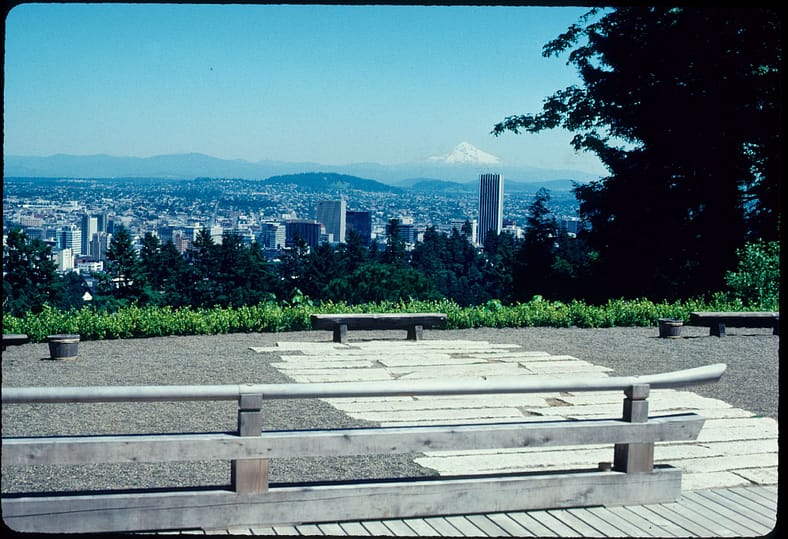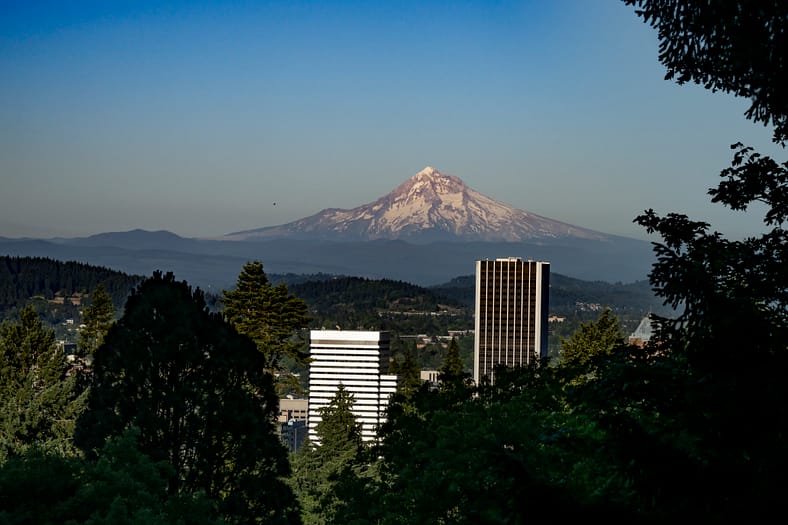
The uninterrupted view of Mt. Hood from Portland Japanese Garden’s East Veranda is a beautiful example of shakkei, or “borrowed scenery,” in which a view of a natural landscape is incorporated into a garden’s design. It is reported that when the Garden’s original designer, Professor Takuma Tono of Tokyo Agricultural University, saw Mt. Hood he likened it to one of Japan’s most beloved natural landmarks: Mt. Fuji.

According to William “Robbie” Robinson, an early Garden leader and head gardener with Portland Parks and Recreation, Tono would often refer to Mt. Hood as Mt. Fuji and likened the flower beds from the International Rose Test Garden to rice paddies, saying of the vista, “All of that reminds me of Japan.”

This panoramic view is one of the best in the city and is also what is called a “protected view corridor.” Since Professor Tono and the gardeners designed it more than 60 years ago, the trees and surrounding vegetation have flourished, even hiding Mt. Hood in its foliage. A group of dedicated advocates – the Garden Resource Committee (GRC) – which is comprised of Portland Japanese Garden board members and leadership as well as dedicated community members, worked together to appeal to the City of Portland’s Bureau of Planning and Sustainability (BPS) in an extensive process to protect this view. Now, it is a sought after scene that can be enjoyed for generations to come.
The Mt. Hood area is also the original location of several stones for Portland Japanese Garden. So many stones were taken (with permission) from here that former Garden Director Hoichi Kurisu (1968-73) joked, “Even now on a clear day we can see Mt. Hood from [the East Veranda] and there’s a little section that is missing. That’s because the Japanese Garden took it all.” To learn more about the journeys early Garden leaders took to find materials for our grounds, click here.